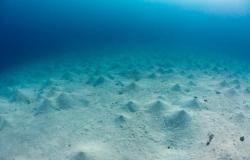
On the subject of anti-seismic renovation Italy is about to host the 18th World Conference on Earthquake Engineering (World Earthquake Engineering Conference), scheduled to take place in Milan from June 30 to July 5, 2024. World conferences take place once every four years in different parts of the world. The first event was organized in 1956, in Berkeley, California. Since then, our country has hosted the event in 1974, in Rome, and now – fifty years later – it is once again turning the spotlight on seismic engineering. The Italian Fiber Net Group will also be at the event, which will present solutions in composite material, designed for improve the resistance and durability of buildings in seismic areas. To better understand the progress made in this field, the innovations, the possible developments and what it means to take part in what represents the greatest showcase of the sector, idealist/news asked some questions to Cecilia Zampa, co-founder, CEO and commercial director of Fiber Net.
Let’s start by talking about fibre-reinforced materials, what are they and what are their advantages?
“Fibre-reinforced materials, by integrating fibers with high mechanical resistance, such as carbon and glass in polymeric matrices, present lightness, high mechanical resistance and durability.
In recent years, they have been successfully adopted in the civil and infrastructural construction sector, especially in areas with high seismic danger, thanks to their ability to absorb energy and resist the actions of earthquakes.
Used for safety and structural reinforcement interventions on existing buildings and structures, they guarantee long-lasting performance even in conditions of high chemical corrosion, such as marine or brackish environments.
Fiber Net Group, a pioneer in Italy in the development of these materials for structural use, has contributed to revolutionizing modern engineering, allowing the construction limits given by traditional materials to be overcome, improving the seismic safety of buildings in full compliance with the construction and architectural typologies , crucial in historic and listed buildings. All with a careful eye on the sustainability of the interventions, reducing the environmental impact and extending the life cycle of the structures”.
What are the properties on which to use composite material solutions?
“Composite material systems and solutions are versatile and are suitable for application on a wide range of existing buildings and structures, both masonry and concrete.
Particularly significant is the use on constrained structures, with high historical value, where the principles of compatibility, durability and reversibility of the interventions must be respected while guaranteeing, at the same time, protection and resistance in the event of seismic events.
Another area of use of these technologies is infrastructures such as bridges, viaducts and tunnels, both road and rail, where the need to improve safety conditions must necessarily be combined with the need to maintain the functionality of the structure and therefore require fast and effective interventions”.
In the field of anti-seismic redevelopment, what does it mean to use these materials? What are the potentials?
“As anticipated,
the use of fibre-reinforced materials for the seismic improvement of the built heritage constitutes a valuable choice that combines compatibility with the wall support with significant resistance qualities without altering the original appearance of the structure.
This is particularly advantageous for properties of historical and architectural value, where invasive intervention options are often impractical. The benefits include increased safety, reduction of risks and costs associated with damage from seismic events.
We continue to be committed to the development of certified products and systems in glass and carbon fiber composite materials combined with polymeric matrices which are widely used in structural recovery, seismic improvement and adaptation and in the safety of existing building and infrastructure assets. Issues such as safety and respect for historical construction characteristics are the basis of the development of each of our systems and products.
So much so that Fiber Net has operated on numerous famous construction sites such as the catacombs of San Callisto, the Pinacoteca of Siena or the Vasari terrace of the Uffizi in Florence, Cascina Continassa, headquarters of Juventus, the Sagrada Familia in Barcelona, numerous interventions on buildings throughout Italy historical as well as obviously all the interventions on modern buildings and infrastructures”.
What does an anti-seismic redevelopment intervention, in particular, on homes using these materials entail?
“The adoption of these materials in an anti-seismic redevelopment intervention leads to rapid execution of the works and less impact on homes.
It translates into an improvement in the seismic performance of the building, increasing the safety of the occupants and reducing the time and costs of any future repairs, generally without requiring the occupants to leave the home or, in any case, reducing inconvenience to a minimum.
On the other hand, the result is a safe home, whose value grows over time, less subject to risks of damage due to calamitous events”.
How has earthquake engineering changed over the years and in which direction is it going?
“Earthquake engineering has undergone a significant evolution, moving towards a more integrated and sustainable approach.
There is a tendency to favor the use of materials and techniques that improve both the seismic resistance of buildings and environmental sustainability.
Innovations and increasingly strict regulations are driving the sector.
As producers of composite materials, we were the first to introduce innovative intervention techniques with glass and carbon fibers in the construction sector, consolidating ourselves as a leader in the production of fibre-reinforced composites.
Sustainability is not only a driver of value, but a social responsibility, so much so that each of our products aims to be an ethical and responsible choice. We have also adopted the EPD certification to confirm the environmental value of our products, thus responding to the growing requests for sustainable materials and construction techniques required by the Pnrr and current policies”.
What contribution can the use of new technologies, most recently artificial intelligence, make?
“Artificial intelligence can revolutionize earthquake engineering by offering new possibilities for modeling and simulating the behavior of structures under earthquakes, thus optimizing the design and reinforcement of buildings.
AI can also help with risk management by analyzing large volumes of data to predict and mitigate earthquake impacts.”
There is much talk of energy requalification and perhaps a little less of anti-seismic restructuring. In his opinion, is greater attention needed on this front? What kind?
“Although energy requalification is crucial, it is essential not to neglect anti-seismic renovation, especially in high-risk areas such as Italy and all of south-eastern Europe and the Mediterranean.
Greater regulatory commitment and incentives are needed to systematically integrate anti-seismic measures into renovation projects,
thus ensuring the long-term safety of people and buildings.”
What does it mean to participate in the 18th World Conference on Earthquake Engineering?
“It means sharing our more than twenty years of experience in the sector with the global community, experience made up of studies and research campaigns with the major Italian universities, which have always allowed us to offer safe, valid and certified systems.
At the event we will be present with four lectures that involve us in experimentation with important professionals in the sector, both Italian and foreign. It is an opportunity to learn, collaborate and contribute to future directions of research and application in the seismic sector, emphasizing the importance of a proactive approach to prevention”.





